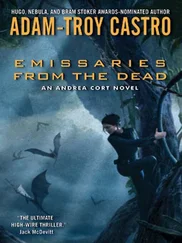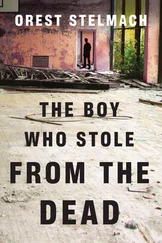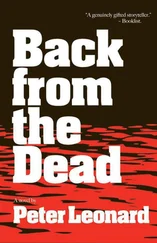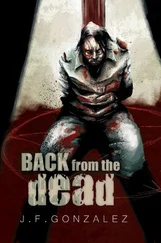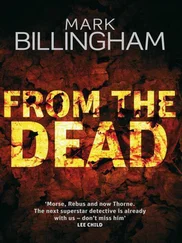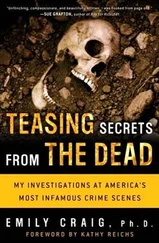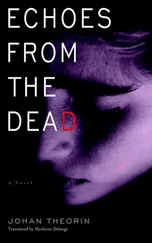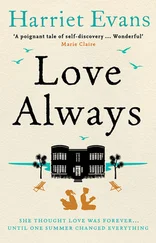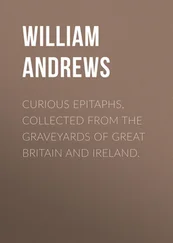
All right. How could I prove what I knew? Lucky for me, I found this an interesting problem, because it was a challenge that would recur again and again throughout my career: I'd have a flash of insight that would seem to descend mysteriously from nowhere, something I'd just know was true without being able to say how. Then I'd have to do the hard scientific labor of reconstructing the unconscious processes that had produced the insight, working backward from solution to proof. I don't think my instinct has ever steered me wrong-but sometimes finding the proof can be difficult.
The general scientific basis for my discovery, of course, was something we'd all learned together in class. Once Dr. Bass had taught us the rules for determining race from bone, he'd gone on to explain that skeletal evidence doesn't always correlate with the color of a person's skin, or the texture of their hair, or even the continent they call home. The Caucasian bones in any given face might belong to a person of coffee-colored skin who identifies as Cuban or Latino or even African American. The owner of a skull with Negroid characteristics might have pale creamy skin and come from a family that considers itself Puerto Rican. Bones tell some of the story-but not all of it.
In this case, though, all I'd had to look at was the bones-and somehow I'd gotten it right. So what had tipped me off? The first clue I'd had to this man's race was when I'd looked at his femur, or thigh bone. Earlier that year, I'd learned that among Caucasoids-the scientific term for Whites-the femur demonstrates a forward bowing of the shaft, known to anthropologists as “anterior [forward] curvature.” In Black people-Negroids-the femur is relatively straight. The femur in Dr. Bass's assignment had been curved-and yet I had known the man was Black. How?
I decided to take a closer look at some femurs. Off I went to Bass's collection of bones, where I lined up twenty male right femurs-ten White males, ten Black-spacing them apart like railroad ties on the shiny black lab table. Slowly an idea began to grow. Maybe it wasn't the femur's shaft I'd been responding to, but the bone's distal end, the end that fits into the knee.
Was this one of those times when I had to rely on touch as well as sight? Closing my eyes, I ran my fingers slowly down to the notch at the distal end. First the White femurs. Then the Black ones…
Wait a minute-here was something! I opened my eyes. Now I could see it. The difference was in the intercondylar notch, the place at the center of the knee joint where the thigh fits into the knee. There was a marked racial difference in the angle of the notch-and somehow, without even realizing it, that was what I'd noticed.
By the time I was ready to graduate in the summer of 1994, I was able to prove that, on the average, the angle of the intercondylar notch differs by about 10 degrees between Blacks and Whites. And I'd come to understand why a generation of Dr. Bass's students had failed at the case I'd finally solved. Because of racial mixing in this country, many African Americans (and probably lots of Whites, too) have a variety of racial characteristics. Our test case's White heritage could be read in the bones of his skull and the curve of his thigh bones-clues to which we had all responded. But the angle of his intercondylar notch revealed his Black ancestry as well.
I was coming to see for myself that skin color doesn't necessarily line up with bone evidence. Our test case might have been light-skinned, dark-skinned, or anything in between, with bones that said one thing and hair and skin that hinted at another. This wasn't the last time I was almost fooled. In 1997, for instance, when I was working as the Commonwealth of Kentucky 's forensic anthropologist, I helped to recover a decomposed body from a cistern in Campbell County. Visually, it seemed that these remains had once belonged to a female with straight, reddish-brown hair and skin the color of dirty snow, so we gave local newspapers and TV stations a description of this missing White female, hoping that someone who knew her would come forward.
After weeks of no response, I agreed to do a three-dimensional facial reconstruction on this woman's skull-and as soon as I removed all of the flesh and saw her facial bones, I realized that our ID had gone awry. This woman's skull demonstrated evidence of racial admixture-that combination of White and Black parentage that leaves nature a lot of choices as to skin color, hair texture, and facial features. When we changed our description to “mixed race,” we were finally able to find someone who knew this person-a dark-skinned woman whose friends considered her “mixed race.” It seemed the six months she spent in the cistern had been enough to destroy her dark epidermal (outer) layer of skin, leaving only the pigment-free endodermal (inner) layer, a creamy white covering dotted with gray patches from the decomposition. Without the skeletal evidence, we would never have found out who she was.

Once we students had some training under our belts, we were sent out into the field as part of a forensic team that worked on actual Tennessee cases under Dr. Bass's supervision. This arrangement had been carefully worked out between the school and law enforcement agencies throughout the state, and it was an invaluable part of our training. Just as in class, all of our case findings had to be written in a concise report that could be read and understood by the wide range of local, state, and federal investigators who might be interested. We also knew that we might have to testify in court, explaining what we'd found in language that a jury could follow and defending our opinions against a defense attorney's challenges.
No longer were we doing this work for academic credit alone. Now it was for real, and the demands on us were high. We couldn't just state that a young woman had sustained a high-velocity gunshot wound to the side of her head-we had to describe the gross and microscopic appearance of the wound: How had her skull bone been damaged? At what point had the bullet entered? What did the hole look like? How did we know it was an entrance wound (where the bullet went in) and not an exit wound (where the bullet went out)? Then we had to back up our findings by citing documented studies of similar wounds.
Despite the simplified, positive statements that fictional detectives tend to make, we learned to pepper our reports with such cautious phrases as “most likely,” “consistent with,” and “appears to be.” And we made sure to back up every opinion we offered with citations from peer-reviewed scientific articles. Slowly but surely, we learned to avoid speculation about the actual murder scenario, limiting ourselves to strictly clinical terms and standard anatomical nomenclature. Let the TV scientists proclaim that “The victim was crouched on the floor when the killer grabbed her hair and then shot her with a gun held six inches from her left ear-making him, of course, right-handed.” In the real world, such a report would more likely read: “There is a circular defect one inch anterior to the left external auditory meatus. This defect is eleven millimeters in diameter and demonstrates internal beveling. Internal beveling is characteristic of entrance gunshot wounds to the skull. [Here we would insert a citation referring to the appropriate portion of the scientific literature.] There is no evidence of gunpowder stippling in the bone.”
Although we were learning volumes from this on-the-job training, our professors warned us not to cut classes to work on a case. But by now we only had four or five hours of formal lectures each week, so we were usually able to respond quickly whenever we were called to a crime scene. Our team was loosely organized, drawn from a pool of about ten grad students, with a core group of half a dozen willing to be on call 24-7 to every law enforcement agency in the state of Tennessee.
Читать дальше



